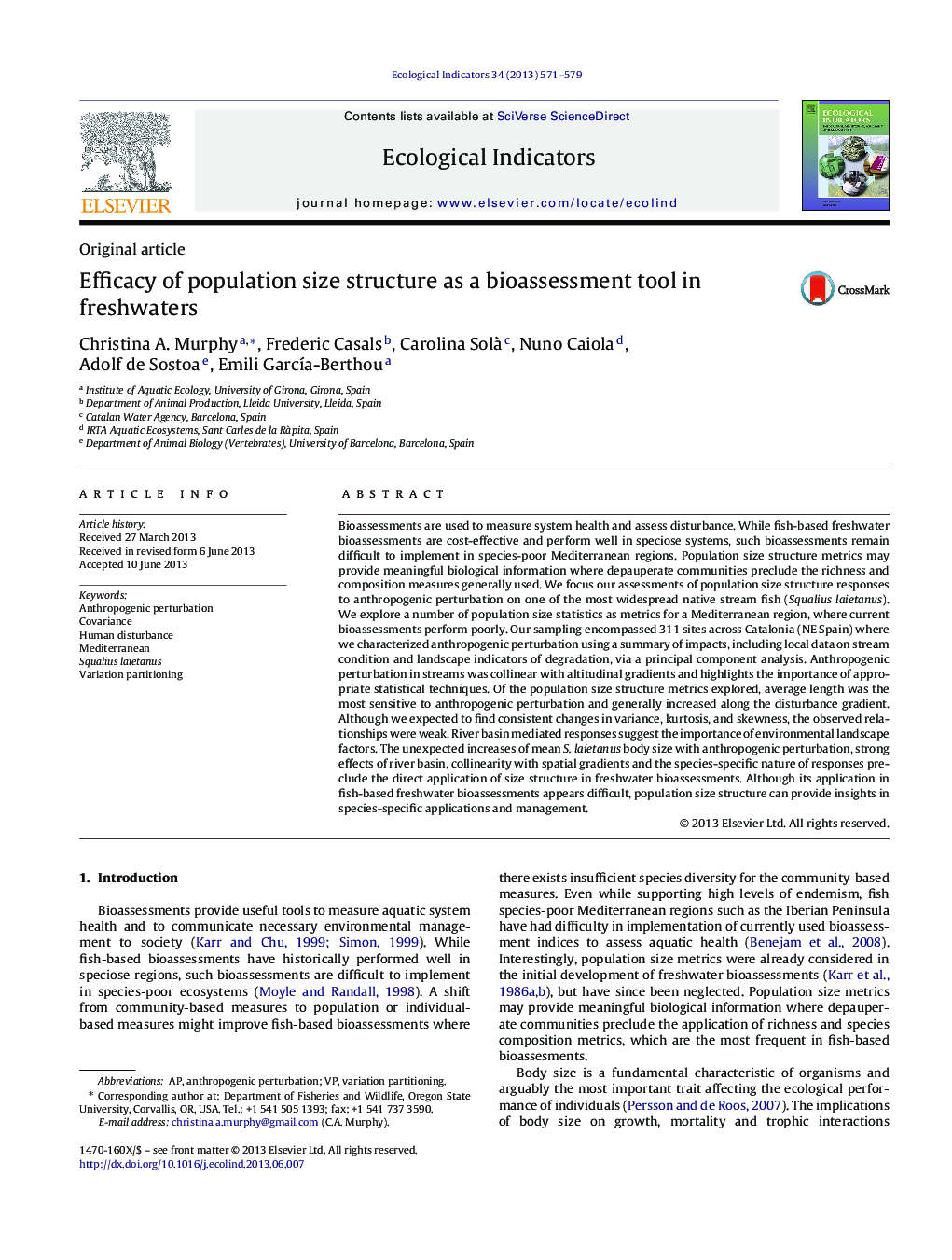| Article ID | Journal | Published Year | Pages | File Type |
|---|---|---|---|---|
| 6295361 | Ecological Indicators | 2013 | 9 Pages |
Bioassessments are used to measure system health and assess disturbance. While fish-based freshwater bioassessments are cost-effective and perform well in speciose systems, such bioassessments remain difficult to implement in species-poor Mediterranean regions. Population size structure metrics may provide meaningful biological information where depauperate communities preclude the richness and composition measures generally used. We focus our assessments of population size structure responses to anthropogenic perturbation on one of the most widespread native stream fish (Squalius laietanus). We explore a number of population size statistics as metrics for a Mediterranean region, where current bioassessments perform poorly. Our sampling encompassed 311 sites across Catalonia (NE Spain) where we characterized anthropogenic perturbation using a summary of impacts, including local data on stream condition and landscape indicators of degradation, via a principal component analysis. Anthropogenic perturbation in streams was collinear with altitudinal gradients and highlights the importance of appropriate statistical techniques. Of the population size structure metrics explored, average length was the most sensitive to anthropogenic perturbation and generally increased along the disturbance gradient. Although we expected to find consistent changes in variance, kurtosis, and skewness, the observed relationships were weak. River basin mediated responses suggest the importance of environmental landscape factors. The unexpected increases of mean S. laietanus body size with anthropogenic perturbation, strong effects of river basin, collinearity with spatial gradients and the species-specific nature of responses preclude the direct application of size structure in freshwater bioassessments. Although its application in fish-based freshwater bioassessments appears difficult, population size structure can provide insights in species-specific applications and management.
